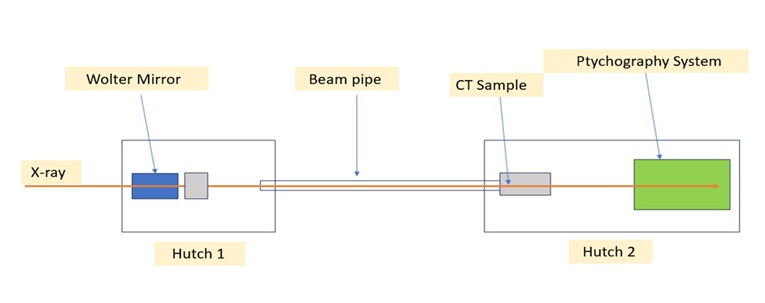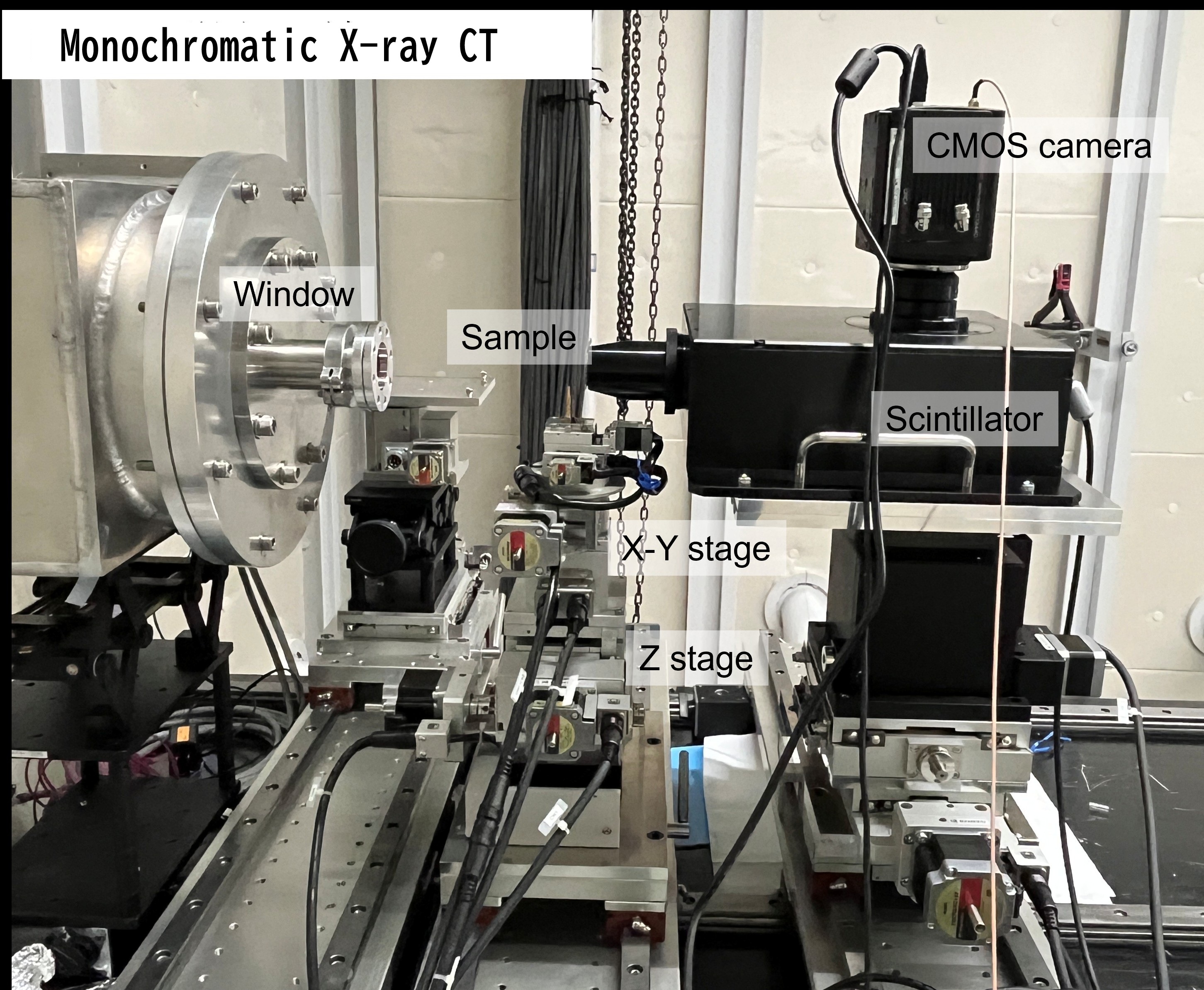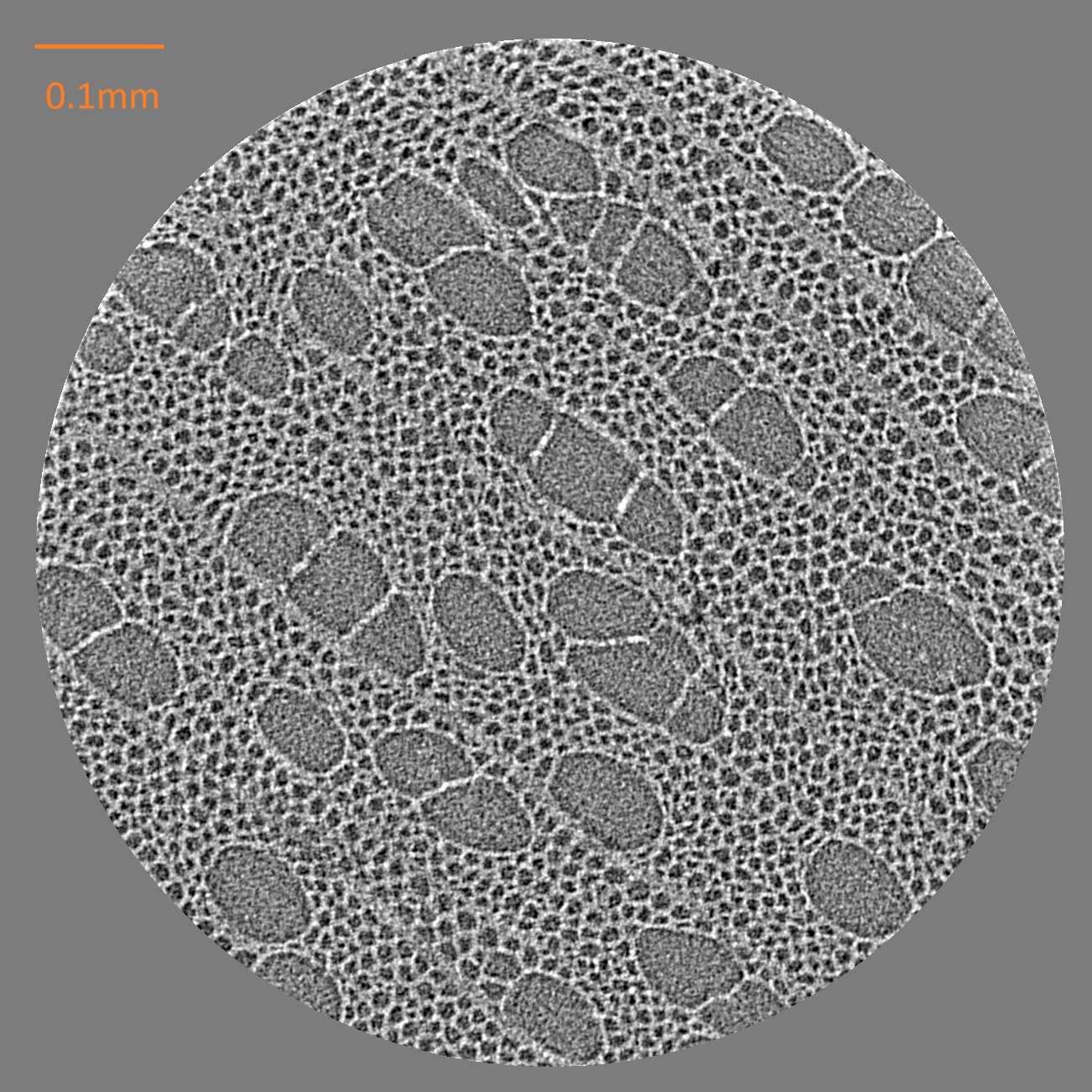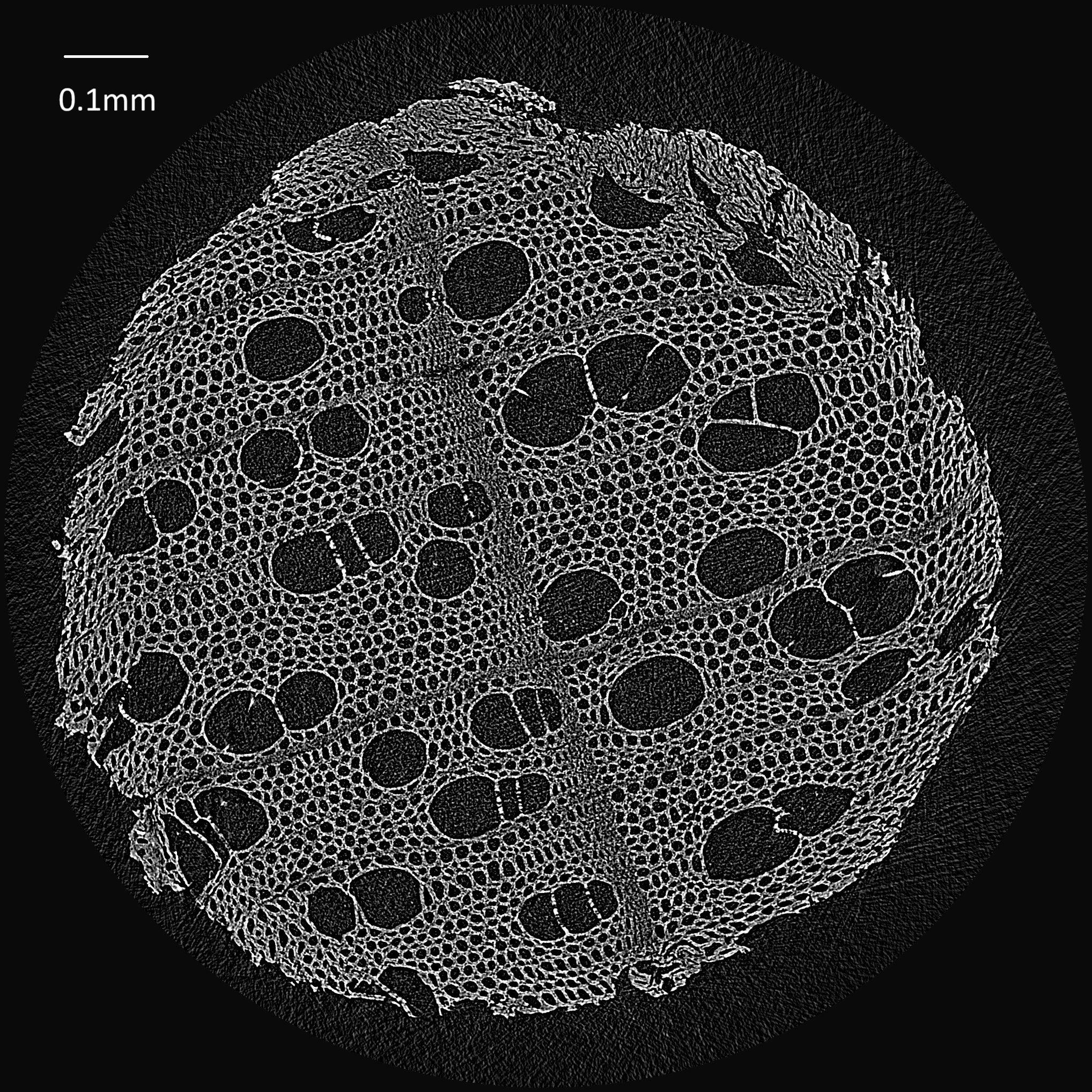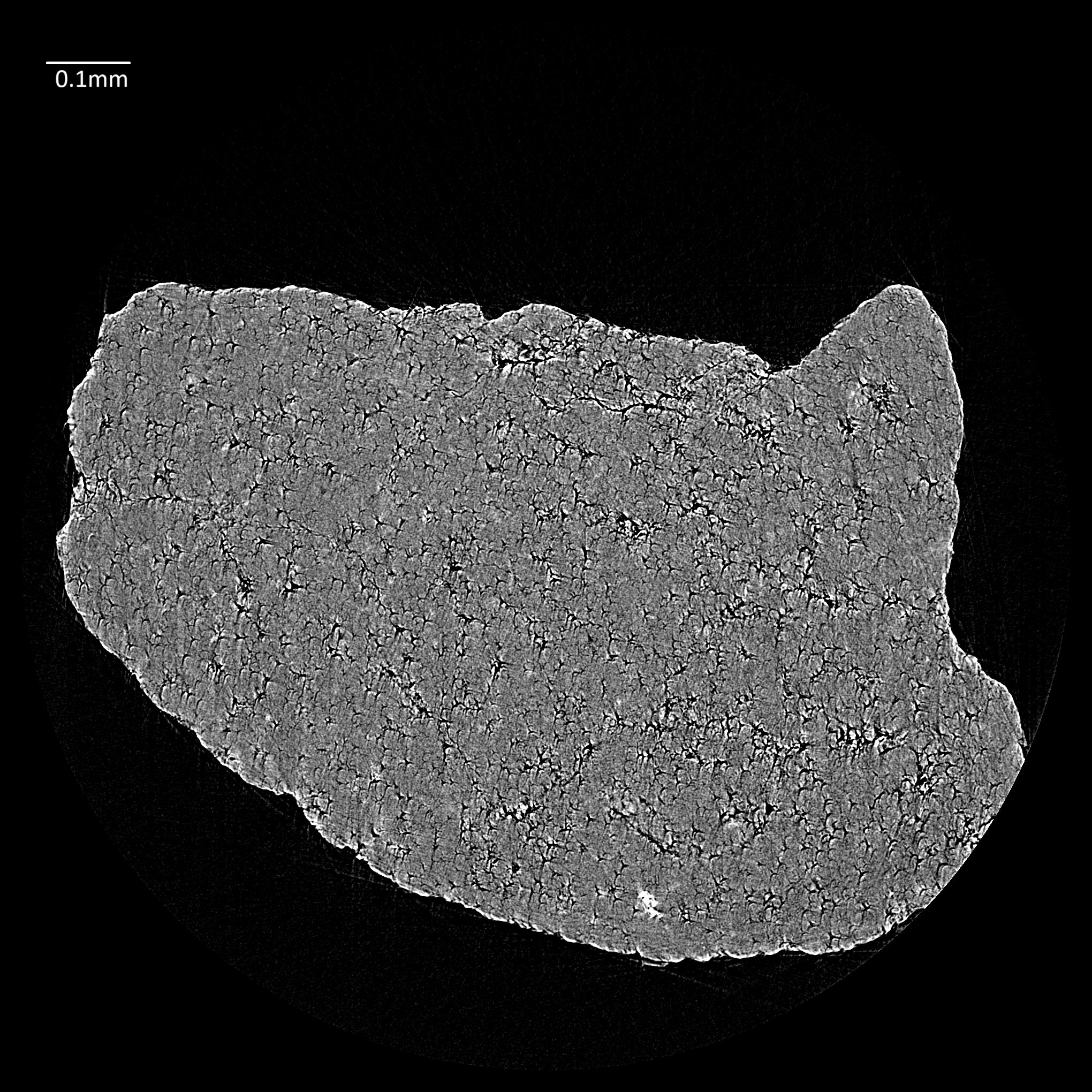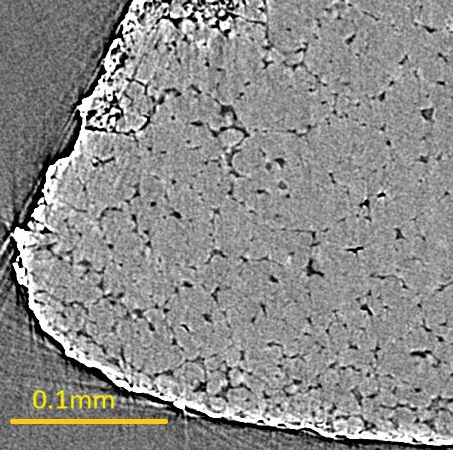BL10U INFORMATION
Experimental Techniques
- Monochromatic X-ray CT
- Microbeam fluorescence mapping (Advanced measurement)
- USAXS (Advanced measurement)
- XPCS (Advanced measurement)
- X-ray Ptychography (Advanced Measurement)
【Coalition Conference's Lecture】(Japanese)
*Please note that the above lecture materials are based on information as of December 5, 2023, and some technical details may have been updated since then.
Overview
This beamline utilizes monochromatic X-rays obtained by a double-crystal monochromator with an undulator as the
light source. It covers the range from tender X-rays to hard X-rays.
There are two experimental hutches. The first hutch, located 35 to 40 meters from the light source, is equipped with a
Wolter mirror, allowing for the use of a microbeam (horizontal: 11 μm, vertical: 0.7 μm (design values)). It is anticipated
that the commissioning of the Wolter mirror will take some time. We will announce on our website when it becomes
available.
The second hutch is situated approximately 49 to 57 meters from the light source. A fixed table at the front of this hutch
enables monochromatic X-ray CT measurements. The maximum sample diameter is slightly less than 1 mm . High-
resolution monochromatic projection imaging is also possible. For both CT and projection imaging, increasing the
distance between the sample and the detector allows for edge enhancement using refraction contrast and phase
imaging through phase retrieval.
Downstream of the second hutch, a ptychography system is installed, enabling high-resolution X-ray imaging. Please
consult Professor Yukio Takahashi, SRIS for inquiries regarding this technique.
The first and second experimental hutches are connected by an approximately 9-meter vacuum pipe. By placing the
sample in the first hutch and the detector in the second hutch, advanced measurements such as XPCS and USAXS can
be performed. For these techniques, please consult Associate Professor Taiki Hoshino, SRIS.
Please note that for advanced measurements, the setup and alignment of equipment may take time, which will be
included in the user's beamtime.
Beam Characteristics
- Energy
- 2.1~18.3 keV
- Flux
- 1.6~12 x 1011 cps (Calculated value, depends on energy and experimental conditions)
- Beam size
- In experimental hutch 2, the beam size is approx. 1 mm (horizontal) x 0.5 mm (vertical) (FWHM).
Hutch size
Experimental Hutch 1: Approx. 6 m (length along the beam axis) x 4 m (width) x 4 m (height)
Experimental Hutch 2: Approx. 10 m (length along the beam axis) x 4 m (width) x 2.8 m (height)
Light Source and Optics
This beamline utilizes a 166-pole, 22 mm period in-vacuum undulator as its light source, and a monochromatic X-ray beam is available after passing through a liquid nitrogen-cooled Si(111) double-crystal monochromator. A set of three total reflection mirrors is installed upstream of the monochromator, allowing for harmonic rejection without changing the beam height. Downstream of the monochromator, there is a cross slit, which can be used as a virtual source for measurements requiring coherence.
Experimental Station
- Experimental Equipment
-
Hutch 1 : [Wolter Mirror]
Focusing size (design value): Horizontal 11 µm, Vertical 0.7 µm
Hutch 2 : [High-Resolution CT Imaging System]
May be installed in Hutch 1
Hutch 2 : [X-ray Ptychography System] - Detector
-
[High-Resolution Visible Light Conversion Type X-ray Image Detector]
Hamamatsu Photonics AA-51 and ORCA-Flash 4.0, pixel size approx. 0.5 µm
Layout
BL10U Monochromatic X-ray CT Basic Information
| Field of View | Approx. 1 mm (horizontal) x 1 mm (vertical) |
| Spatial Resolution | Approx. 1 µm |
| Pixel Size | 0.65 µm |
| Measurement Time per Sample | Approx. 1 mm (horizontal) × 1 mm (vertical) |
| Data Volume per Sample | 65 GB (Please bring a USB storage device with a capacity of 2 TB or more.) |
| Energy |
Selectable between 6 keV and 18.3 keV. Typically, users choose between 8.3 keV or 15 keV. Other energies require prior consultation. |
| Sample Material |
The sample must be transparent to X-rays from all directions. It is desirable that the transmittance is 10% or higher in the direction of maximum absorption. You can check the transmittance of various materials on the CXRO website. CXRO website |
| Sample Size | Ideally, a cylinder with a diameter of 1 mm or less, or a rectangular prism with a side of 1 mm or less, and a length of approx.10-50 mm, with the region of interest located 10-15 mm from the bottom. Samples with a width exceeding 1 mm may extend beyond the field of view, which can lead to time- consuming alignment and potentially poor image quality depending on the sample. |
| Sample Fixation | Generally, cylindrical samples are fixed to a sample holder using double-sided tape, but other methods such as clay can be used. |
| Method | In a standard measurement, the sample is rotated 180 degrees in 0.1-degree increments, acquiring 1801 projection images. A tomographic image is then reconstructed from these projection images. |
| Data Transfer |
A solid-state drive (SSD) with a transfer speed of 1000 MB/s or
higher is recommended for data transfer. Using low-speed
SSDs (500 MB/s or less) or hard disk drives (HDDs) may result
in incomplete data copying during your allocated beamtime. As a rule, the beamline PC cannot be used outside of your reserved beamtime. |
